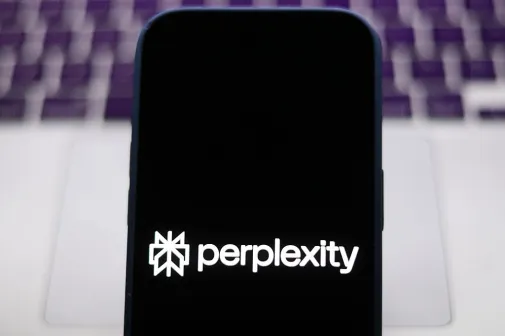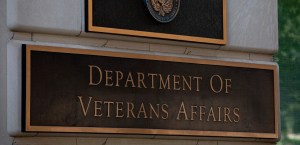Could a FedRAMP rehaul usher in the US government’s AI age?

The Federal Risk Management and Authorization Program isn’t well known beyond technology-focused government spaces. But approval through FedRAMP might be the biggest hurdle to the world’s most lucrative public-sector client: the U.S. government.
Created in 2011, FedRAMP provides a pathway for cloud service providers, like Microsoft Azure or Google Cloud, to earn authorization to work with the federal government, typically through a review facilitated by an agency that wants to work with that particular company. Once a service receives authorization, the technology is available for other government agencies to purchase.
For this reason, the program is considered a success in government efficiency, as it has generally reduced the need for agencies to repeat each other’s work.
FedRAMP has support from leaders in both parties — including Emily Murphy, the top General Services Administration official during President Donald Trump’s first term, and influential members of Congress — and it’s played a major part in helping the government transition to the cloud.
“It really becomes a license to participate,” said Jessica Salmoiraghi, senior director for IT modernization and procurement at the Business Software Alliance, a trade group that represents several artificial intelligence companies, including OpenAI and Cohere. “You have a FedRAMP license and you’re able to go from one agency to another to do software and other cloud-based work.”
Still, earning an initial authorization can be a slog. While AI companies flirt with pursuing their own authorization, the program itself faces a series of potential challenges, including unclear and drawn-out timelines, expensive reviews, and a difficult-to-parse relationship with the Federal Information Security Management Act, which holds federal agencies responsible for their own cybersecurity. On a practical level, it’s currently stifling companies like OpenAI and Anthropic from immediately offering their models to their government through their own clouds.
“If companies had the option to come in and pay for a faster review, we think a lot of them would take it,” said James Andrew Lewis, director of the technology and public policy program at the Center for Strategic and International Studies. “Lack of resources is a problem for FedRAMP. It slows down adoption of AI.”
Commercial AI tools have still made their way into federal agencies’ hands through a web of partnerships with third-party contractors and already-approved cloud services and platforms. But FedRAMP is set for a major rehaul, including new forms of automation and an expanded role for the private sector, potentially inviting changes that could make it far easier for government agencies to adopt AI.
How FedRAMP works
There are a few important parties in the FedRAMP process, starting with the program management office, which helps with information-sharing, coordination, and overseeing standards. There’s also the FedRAMP Board, a governance body that monitors the program overall and was previously called the Joint Authorization Board. For now, federal agencies shepherd cloud companies through the process before the companies are authorized to operate. There are also assessing organizations that are responsible for auditing cloud systems and ensuring they’re meeting the requirements set by the program.
It’s an intensive process. If a federal agency wants to use a company’s cloud services, it must then pay and assign personnel to review that technology according to FedRAMP standards. Once that happens, the FedRAMP program can list the service in the federal government’s marketplace, noting that a company’s cloud service is in the review process. (None of the prominent generative AI startups are currently listed in the marketplace, though firms like Google, Oracle, Zscaler, and many others are).
Once a cloud service provider goes through the FedRAMP process, the cloud providers need to maintain continuous monitoring responsibilities, including regular security assessments — and agencies are required to ensure the cloud services are following through on those responsibilities.
Importantly, the process doesn’t involve checking the efficacy of a software system hosted on the cloud — if it works as intended — but only for whether protections for federal data are in place, said Brian Conrad, a Zscaler executive who previously served as acting director of FedRAMP.
“The agency will partner up with that commercial cloud provider, and then the agency will do the initial authorization, as they’re required to do through FISMA,” Conrad said. “Once all that is said and done, they’ll use the FedRAMP standards and templates. … The package will come over to FedRAMP and FedRAMP will do their evaluation to ensure that that package can be reused across the federal government.”
FedRAMP authorization comes in different levels. A system with a “low” impact level has relatively low sensitivity, while “high” impact cloud services might involve data used in law enforcement, emergencies, and health systems, according to government guidance.
Technically, there are other ways to get AI to government, noted Gordon Bitko, executive vice president at the Information Technology Industry Council, a trade group that represents tech companies including Salesforce, Meta, OpenAI, and Anthropic. A company might sell AI to the government through a third-party data center or operator, he said, or access AI that’s stored directly on a device it’s purchasing.
A subscription service that involves AI might not fall under FedRAMP, Conrad explained, though it might still need an authority-to-operate.
Still, major cloud providers say they’ve had success getting AI tools through services already authorized through FedRAMP. Microsoft told FedScoop that it’s “actively working” to support federal missions and allows the government access to more than 1,800 models through its AI Foundry, along with its Copilot studio. Similarly, Google says it’s seen “tremendous interest” in the use of its AI assistant Gemini, including from national security organizations, the National Institutes of Health, the Air Force, and the Defense Department.
Still, the process can be wonky and expensive, especially for newcomers. For this reason, companies like OpenAI and Anthropic have worked with existing FedRAMP-authorized services. Azure OpenAI is now available through Azure Government for Microsoft commercial cloud. Through Microsoft services, OpenAI has made both ChatGPT Enterprise and ChatGPT Gov available to government agencies.
Third-party companies are also involved in selling generative AI systems to agencies, including FCN Inc., Carahsoft, and General Dynamics Information Technology. Anthropic has partnered with both Palantir and Amazon Web Services for government users, as well as Appian, a cloud computing company that offers process optimization.
Thus far, ChatGPT has shown up at NIH, the National Gallery of Art, the Treasury Department, and even NASA.
“If you are a software service provider, which is essentially what the AI model providers [are] … then the best thing for you is to find somebody else to help you provide all the other infrastructure that has to go into delivering that capability to the government,” Bitko said. “In the end, the complexity for FedRAMP is there are hundreds and hundreds of controls that somebody’s got to be responsible for,” essentially security measures “that you have to do to make sure that you can pass the accreditation.”
But these companies have an appetite for pursuing their own authorization, and it’s possible that interest could grow under coming changes to the program. The goal of the program, FedRAMP Director Pete Waterman said on March 24, is to make it easier for companies to join the government marketplace.
“The reality is that FedRAMP is so expensive and burdensome right now that most companies never consider it. We need to lower that burden,” Waterman said at the Alliance for Digital Innovation event.
As a general matter, it’s very clear that the Trump administration wants to see a very rapid adoption of commercial AI capabilities. Those could be in-house capabilities or those provided by companies like OpenAI and Cohere, said a former executive branch official who worked on FedRAMP.
Still, there are open questions, particularly around whether the program should prioritize bringing in far more cloud service providers or helping agencies access already-authorized systems.
In the end, these companies are looking to include the government in their customer base.
Anthropic is eyeing its own FedRAMP authorization, the company previously told FedScoop, and OpenAI’s Anna Makanju has said her company is pursuing moderate authorization. Neither company has formally announced an agency sponsor, though there were some discussions within USAID about sponsoring a FedRAMP review for OpenAI before the agency was effectively shuttered. Both Anthropic and OpenAI are also hiring engineers familiar with FedRAMP processes.
“Anthropic’s business model relies on people running as many tokens as possible,” said Michael Beckley, the chief technology officer and founder of Appian. “They built this massive machinery to consume tokens but need to actually have demand. It’s like a factory waiting for orders. And there are very few organizations, probably none, that can generate as much order flow as the U.S. federal government.”
It’s not just those companies that want government business. Peter Guerra, group vice president of data and AI in government at Oracle, noted that vendors are highly interested in defense and federal civilian sales, especially in the health sector. He pointed to one software vendor that recently succeeded in a large Series C funding round based on its ability to potentially sell to the government.
Challenges for AI firms
The process of finding a government partner that’s actually interested in a particular service can take months and even years, according to Bitko. The costs associated with FedRAMP can run into the hundreds of thousands of dollars and in some cases into the millions.
The process can also be opaque.
“What we’ve found is that in some cases, we submit things for review and then they go into an unknown black box for some period of time, and it’s unclear who’s responsible for moving [something] along or what the holdups may be,” Michael Sellitto, Anthropic’s head of global affairs, told FedScoop last year.
“We’re engaging with the government because we think it’s important and it’s part of our values,” he said. “But I think there’s a lot of other startups out here in the Valley that probably just completely ignore the government because it’s too hard to navigate, too slow, and too opaque.”
With FedRAMP’s lengthy timeframe, companies are challenged to consistently make the same technology available to the government as they do in the commercial sector.
“There’s a time differential, and in that time differential, we usually are adding new AI services in our commercial realm, and then that has to go and get in the queue for FedRAMP,” said Oracle’s Guerra.
Some services are available in the commercial space and are ready for the government, but are simply waiting on the FedRAMP process, he added.
As FedRAMP director, Waterman said the program hopes to clear its backlog of vendors by the end of April, but many of the existing procedures will remain in place until the new FedRAMP 20x approach is developed. Until then, for many of the latest AI technologies, the U.S. government may have to wait.
This story was supported by the Tarbell Center for AI Journalism.






